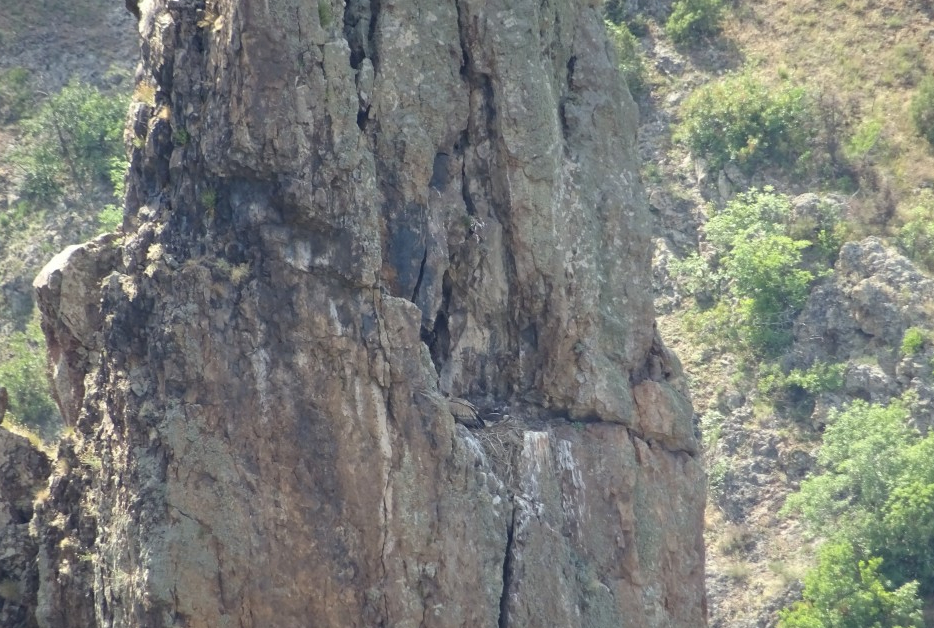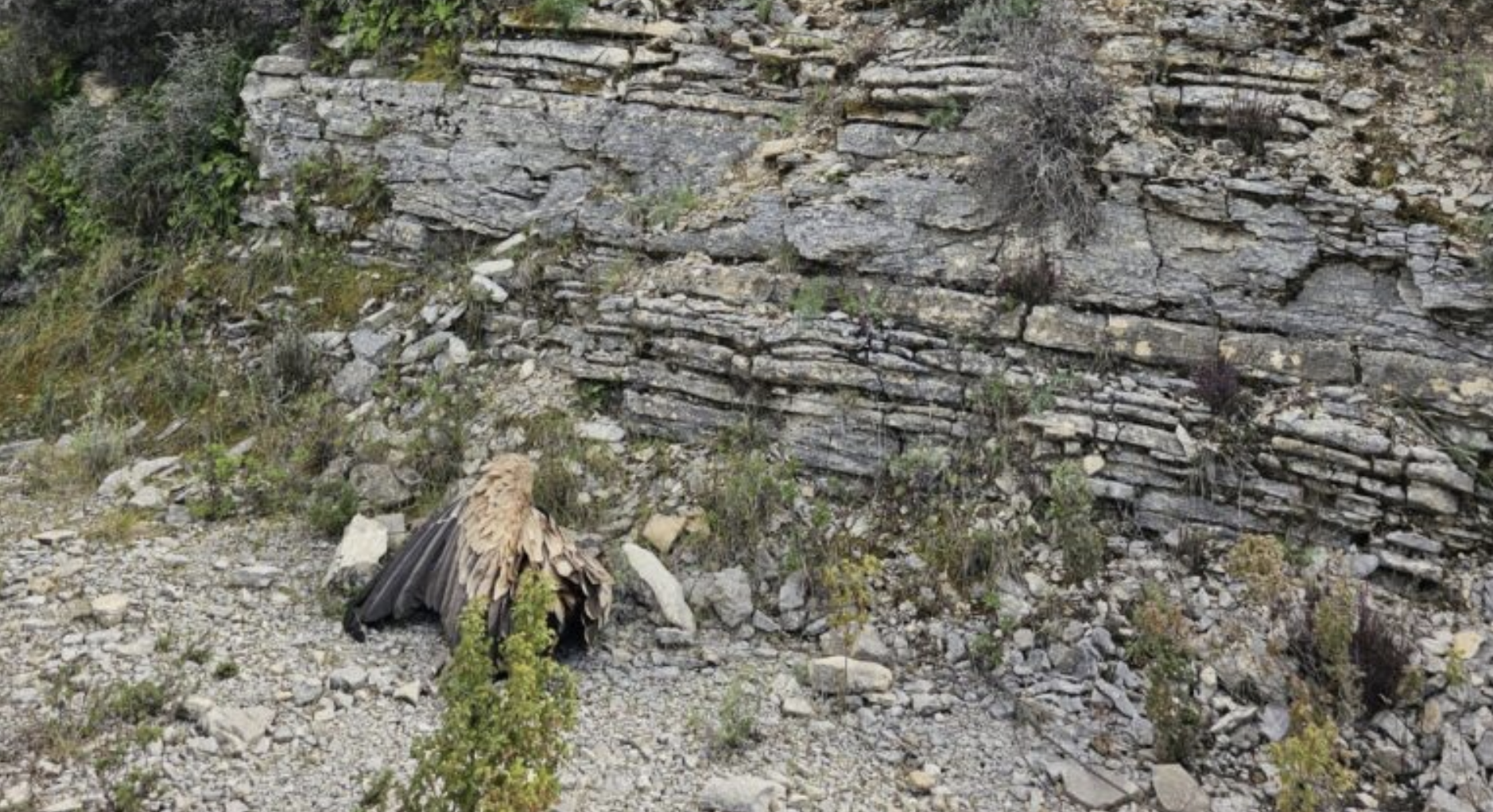
A team from one of the partners leading our LIFE Re-Vultures have been monitoring the progress of the Griffon Vulture breeding season since it began in back in March and now during a survey of the breeding pairs have counted a record number of young birds.
Record number of young Griffon Vultures
Back in March the team from the Bulgarian Society for the Protection of Birds (BSPB) counted a record number of 95 breeding pairs in across the Eastern Rhodope mountains in Bulgaria. The hopes were high that with nearly 100 pairs the number of young that would hatch would also break all previous records, and those hopes were met. During a survey of the colony in the valley of the Arda River this spring the team counted a total of 72 young chicks being raised by breeding pairs, a growth of seven chicks compared to 2018, continuing the positive trend over the last few years.
Breeding Griffon Vultures in the Eastern Rhodope Mountains (c) Dobromir Dobrev
“There are three more couples who have re-cast and expect to know if they will breed successfully and thus reach 75 hatched youngsters this year,” Dobromir Dobrev from BSPB said. “There is an important moment for the young people to get enough food for them so they can leave their nests in a little more than two months”
During the survey of the Arda Valley the team found a breeding pair that was overlooked during the first survey back in March, bringing the total number of breeding pairs in the Bulgarian part of the Eastern Rhodopes to 96.
This population is just one of four different populations across Bulgaria, around the Vrachanski Balkan Nature Park in the Western Balkan Mountains, three different colonies in the Eastern Balkan Mountains and at Kresna Gorge. It is hoped that these other populations have had as successful breeding season as the one in the Eastern Rhodope Mountains which could result in the population in Bulgaria passing 150 breeding pairs for the first time and a significant moment in vulture conservation in Bulgaria.
Griffon Vultures in Bulgaria

In Bulgaria the population declined through most of the 20th Century and was thought to be extinct in the country in the 1960s until the discovery in 1978 of 28 birds and one breeding pair in the Rhodope mountains. Significant conservation efforts by the Bulgarian Society for the Protection of Birds, the Foundation for Wild Flora and Fauna and Green Balkans among other other partners, since 1989, has led to the slow increase of this population. Reintroduction projects from 2010 in historic areas where the Griffon Vulture has been found such as the Balkan Mountains and Kresna Gorge has seen the population in the country increase with the number of breeding pairs estimated at between 100 and 120.
LIFE Re-Vultures

Starting in 2016, the five-year LIFE RE-Vultures project was developed by Rewilding Europe, in collaboration with the Rewilding Rhodopes Foundation the Bulgarian Society for the Protection of Birds, WWF Greece, the Hellenic Ornithological Society and us here at the Vulture Conservation Foundation. The aim of the project is to support the recovery and further expansion of the populations of Cinereous and Griffon Vultures in the cross-border region of the Rhodope Mountain by improving natural prey availability, monitoring movements of birds to help understand the threats they face and carrying out activities that will reduce the mortality of the populations from threats such as illegal wildlife poisoning and collisions with electricity infrastructure.





